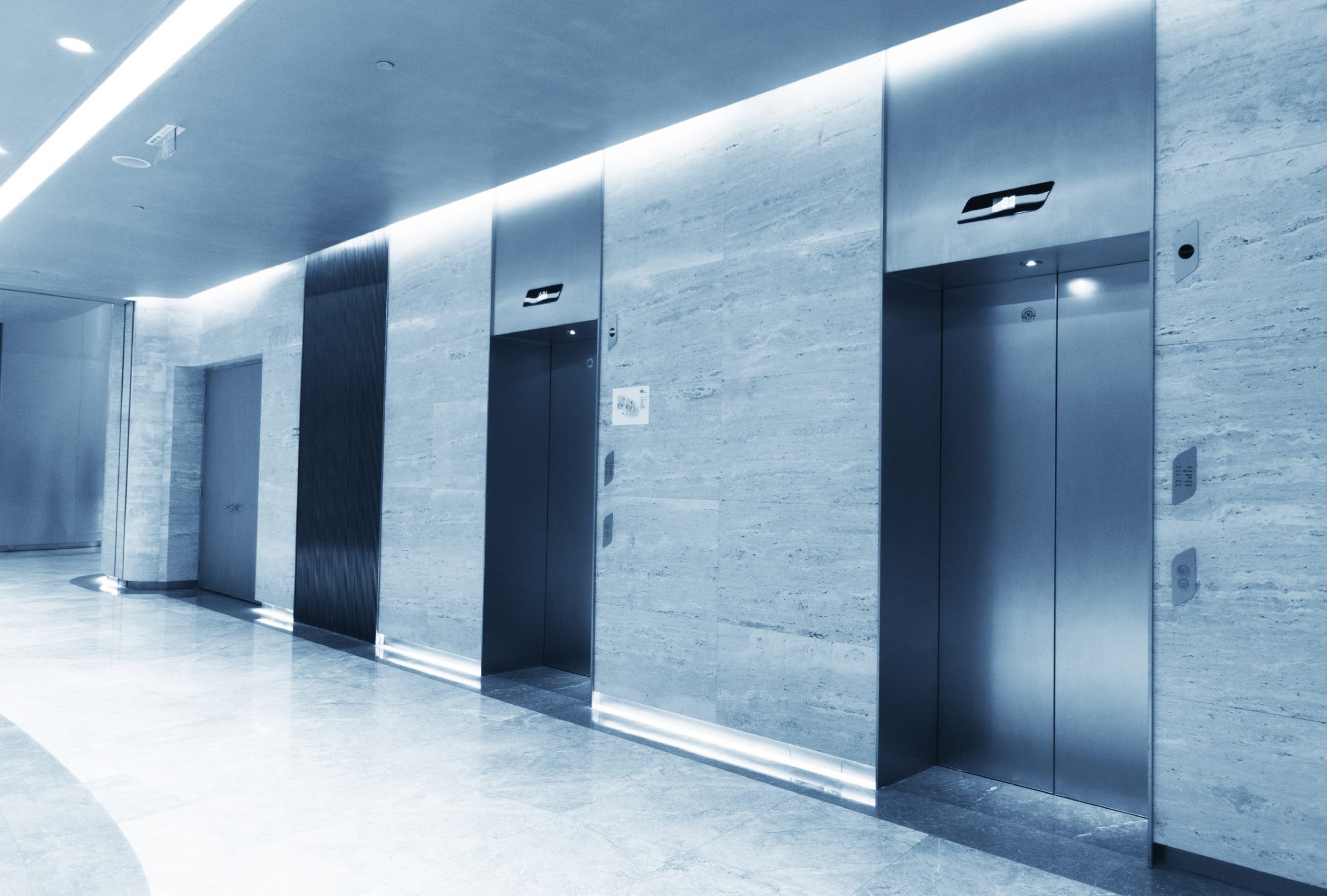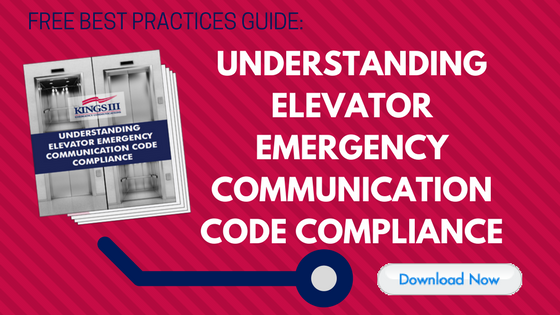BLOG CATEGORIES
Recent News Reveals Elevator Rides Turned Tragic. What Can We Do?

This blog post references a recent event that was by all accounts a tragedy, but we’re not here to scare you or point fingers. We simply want to raise awareness that elevator accidents can occur anywhere. What can you do to improve the situation?
It’s something you never want to see happen: a New York man suffered a fatal accident in an elevator located in his luxury apartment building. His neighbors watched helplessly, and could do nothing.
Sam Waisbren, 30, tried his best to escape the elevator as it quickly descended from the lobby; he was ultimately crushed between the elevator car and the shaft wall, according to authorities. First responders pronounced Waisbren dead at the scene. The medical examiner’s office ruled the death an accident, according to CNN. 911 had been called.
Moments like these that make us take stock of our lives, and — if you’re a property manager — reevaluate your building’s safety processes beyond meeting codes and standards. It’s important that we pay attention to accidents like this one in order to emphasize the importance of maintaining and paying extra care and attention to our elevators- a key cog when it comes to property safety. Now is the time to take a closer look at your elevator system and see how it would measure up in a similar situation.
We all know elevators malfunction, in the worst cases resulting in an unnecessary tragedy and much more commonly, in the everyday emergency. What can you do to improve the situation? While not all mishaps are preventable, the best answer we can give is proactivity. Be attentive to your elevators; consistently and diligently look into them and make sure they are performing properly and look for signs of any issues. Commit yourself to elevator safety- after all, your elevators are some of the most high-traffic areas on your property.
Who is monitoring your elevators? Find out how to make the best choice here.
Elevator codes and requirements are in place for our safety.
Elevator codes and standards are developed by various official bodies including the American Society of Mechanical Engineers (ASME) and the International Code Council (ICC) who develops the International Building Code (IBC).
It’s important for us to understand that elevator codes aren’t in place just to pass an inspection on paper, but to help ensure the safety of the many passengers who frequent our elevators on a daily basis.
It is essential that we understand elevator safety codes and why they are in place- see our blog post: Your Quick and Easy Elevator Code Checklist. *Keep in mind, ASME is currently finalizing the 2019 edition of the Safety Code for Elevators and Escalators (A17.1/B44), with specific changes made to the elevator communications code section, to be published by the end of this year. Keep an eye out for updates from us about what this will mean for you and your elevators. It’s always important to note: these code updates ONLY apply to elevators permitted for construction or modernization (alteration) after the code is published and adopted by the state where the elevator is located. It will not impact existing elevators which are not undergoing modernization.
FREE DOWNLOAD >> Understand your elevator’s emergency communication code compliance here.
Going beyond code compliance, building managers and property managers are responsible for our tenants when onsite, especially in a high-traffic, highly utilized area such as an elevator. Instead of treating an elevator inspection as a line item to pass, we must prioritize them as we do other key property life safety items- the bare minimum is not enough.
You’ve heard the expression a million times, and yet it never loses its effectiveness: safety first. Kings III Emergency Communications gets you there first, with the most dependable emergency communications system on the market. Reduce risk, liability and cost, and replace your elevator emergency phones free of charge.
With Kings III, your emergency elevator phone system will be met with skilled, trained and compassionate professionals, 24/7/365. Our operators are Advanced Emergency Medical Dispatch certified (AEMD), which allows them to give you step-by-step pre-arrival medical instructions, including CPR, if needed. An AEMD certification meets and exceeds all national safety requirements and allows for timely attention in the event of an emergency.
CATEGORIES TAGGED
ELEVATORS
PROPERTY SAFETY
CATEGORIES
KEEP LEARNING

Kings III Acquires LiftNet, Advancing Connected Safety & Remote Monitoring in Elevators and Escalators
Kings III Emergency Communications partners with Wurtec to enhance elevator video messaging systems, addressing new code requirements for two-way displays and video monitoring. The collaboration combines Kings III's emergency response expertise with Wurtec's industry solutions to provide streamlined, compliant elevator safety communications nationwide.

Is Your Pool’s Emergency Phone Compliant? Here’s How to Check (And What to Do If It Isn’t)
Is your pool’s emergency phone truly compliant and ready when it matters most? A reliable, code-compliant emergency phone is more than a regulatory requirement—it’s a critical lifeline that ensures immediate access to help during emergencies. This guide walks you through how to check compliance, properly test your phone, and take the right steps if it doesn’t meet current standards. Whether you're ensuring your current system is up to code or exploring a more dependable solution, we’ll help you navigate the process and safeguard both safety and liability.

8 Women Who Shaped the Future of Emergency Response & Dispatch
This Women’s History Month, Kings III is honoring the women who have paved the way in emergency response and dispatch. From breaking barriers in EMS to pioneering advancements in emergency communication, these trailblazers have helped shape the way lifesaving services operate today. See eight influential women whose contributions continue to impact the field and inspire future generations.

Honoring Black Pioneers: 7 Influential Figures in Emergency Communications & Response
This Black History Month, Kings III is honoring Black men and women who served as pioneers in the fields of emergency dispatch and emergency response. See 7 influential trailblazers who broke barriers, advanced life-saving technologies, and shaped the way emergency services operate today.

How Recent Spikes in Copper Theft Threaten Your Emergency Communication & What You Can Do About It
Rising copper theft is putting emergency communication systems at risk, leading to potential service outages. Without a reliable backup, property managers may face compliance issues and safety concerns. Learn more about the threat and how a cellular solution can help protect your property.

Is Your Hotel’s Emergency Communication System Up to Code?
Hotel emergency communication systems must meet strict safety and compliance standards, but are yours up to code? From elevator phones to pool and parking lot emergency call systems, we break down key requirements and how to ensure your property stays compliant.

Kings III & Wurtec Partner to Improve the Emergency Communication Market of Elevator Video Messaging Systems
Kings III Emergency Communications partners with Wurtec to enhance elevator video messaging systems, addressing new code requirements for two-way displays and video monitoring. The collaboration combines Kings III's emergency response expertise with Wurtec's industry solutions to provide streamlined, compliant elevator safety communications nationwide.

Updated Elevator Code: Who are my Authorized Personnel?
Confused about who qualifies as "authorized personnel" under the new ASME 17.1 elevator code? Learn why the same authorized staff must monitor all emergency communications—audio, video, and messaging—and why split monitoring solutions won't meet compliance requirements for your building's safety system.

What an Emergency Dispatcher will Most Likely Ask You
When suddenly faced with an emergency, you may immediately feel frightened and helpless. An emergency communications system can help reduce or eliminate those reactions by providing immediate assistance. Here's what you can expect on the other side of a call you place from an emergency phone.





